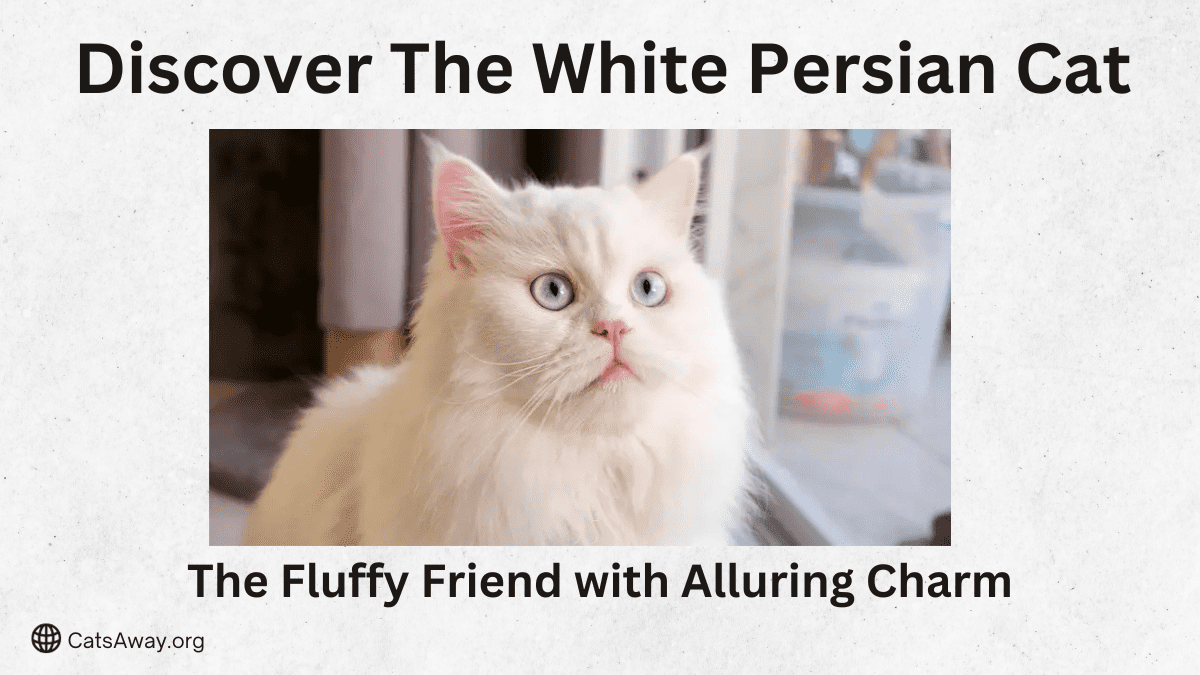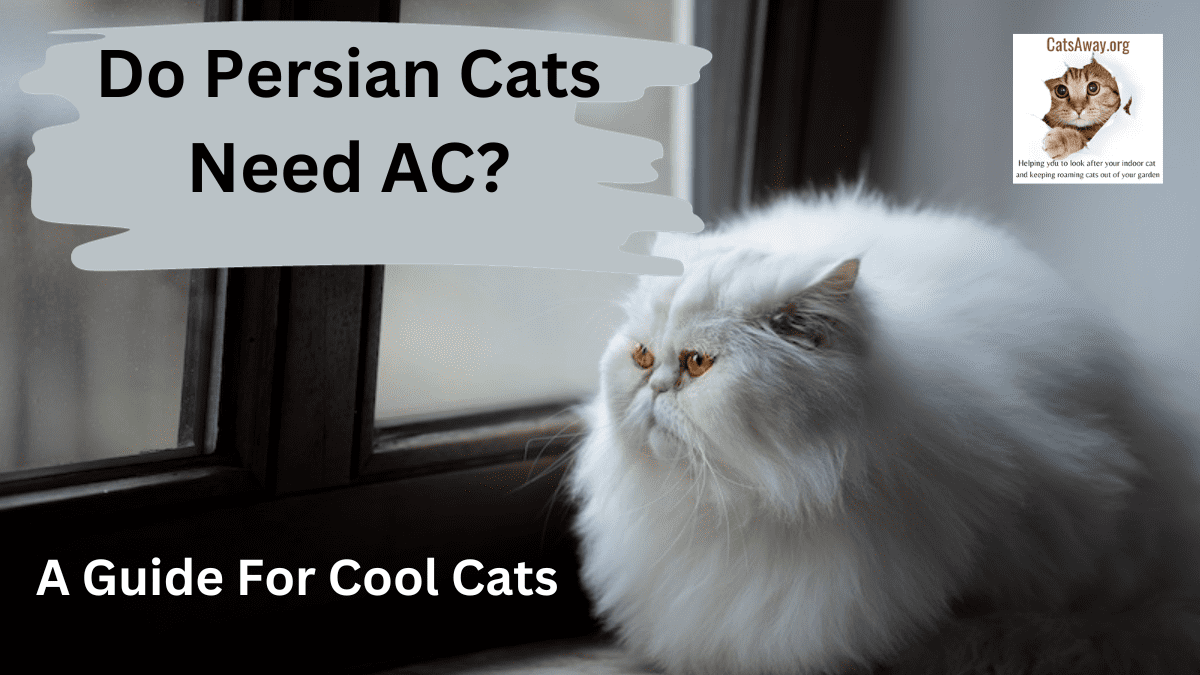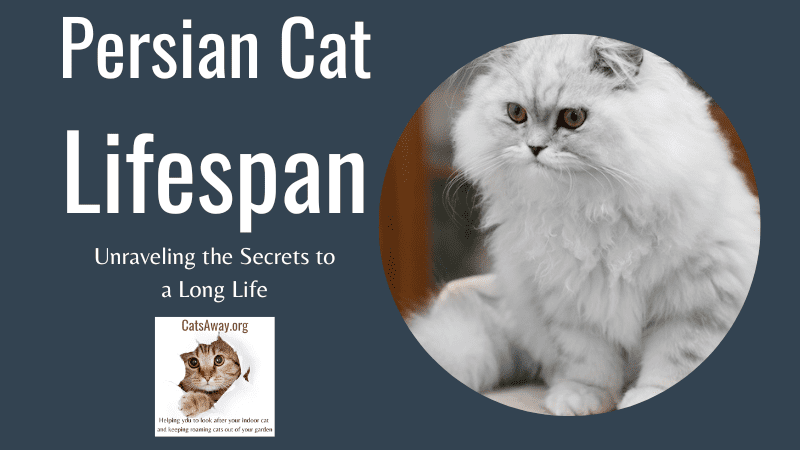As a cat lover, you’re probably familiar with Persian cats and their luxurious coats. These elegant felines come in various types, each with their own unique charm.
You may notice different facial features and colors among Persian cats – that’s because there are several varieties within the breed. In the next section, we’ll explore these subtypes and what makes them so special.
So, get ready to learn about the fascinating world of Persian cats! Whether you’re a prospective owner or an admirer of these fluffy beauties, understanding the different types will deepen your appreciation for the breed.
Different Types of Persian Cats
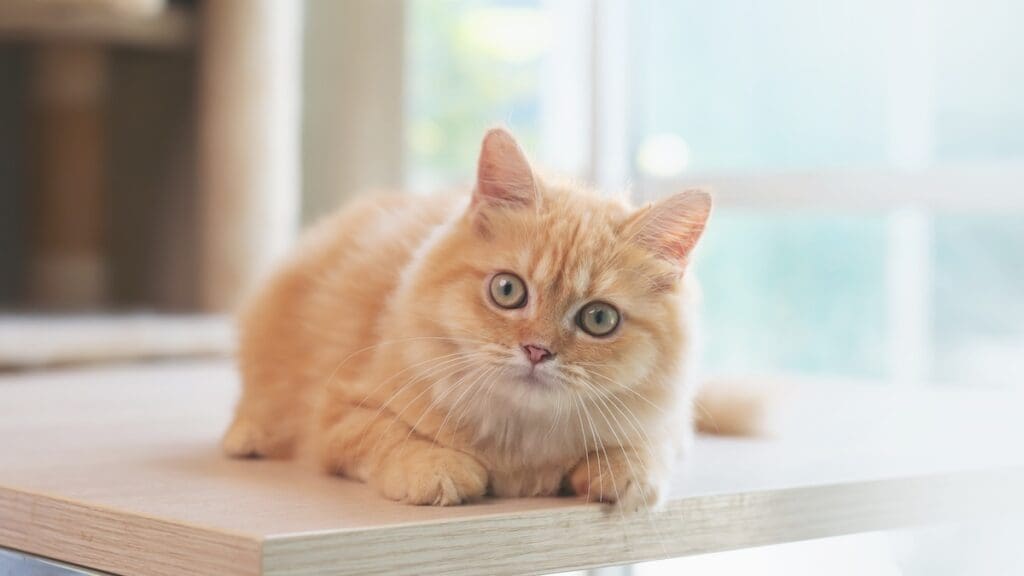
Tabby Persians
You’ll find Tabby Persians are playful and have a distinct pattern on their fur. Their color variety ranges from silver, red, to brown.
Himalayan Persians
Himalayan Persians are a crossbreed of Siamese and Persian cats, featuring blue eyes and pointed patterns. These cats are known for their affectionate nature.
Chinchilla Persians
Chinchilla Persians are known for their luxurious, long silver coat. They have a friendly, gentle demeanor, making them great companions.
Teacup Persians
Teacup Persians are smaller versions of Persian cats, often weighing under 7 pounds. Despite their size, they share the same charming features as the larger varieties.
Traditional Persian
Traditional Persians have the classic flat face and long, silky fur. They are well-loved for their docile and affectionate personalities.
Calico Persian Cat
Calico Persians feature a beautiful mix of three colors. They can be quiet and reserved, but also form strong bonds with their family.
White Persian Cat
White Persian Cats are elegant and graceful creatures. Their sweet temperament makes them perfect for families or single owners alike.
Doll Face Persians
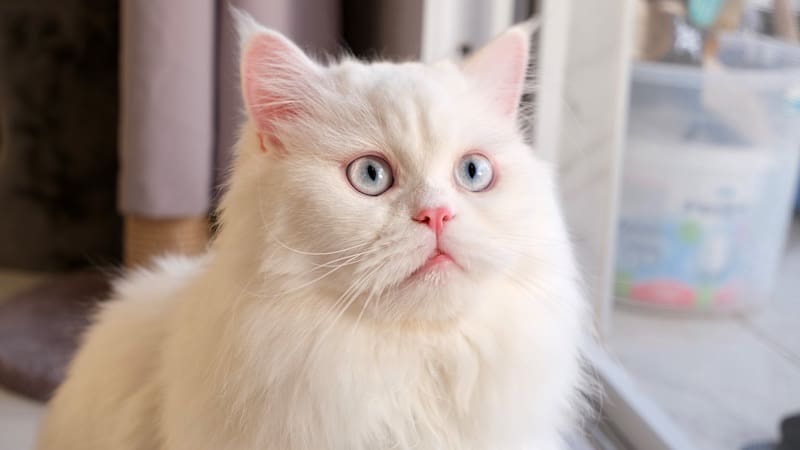
Doll Face Persians have a more moderate facial structure compared to other types. Their elevated nose lets them breathe more easily.
Lilac Persians
Lilac Persians have an enchanting soft-gray fur. This rare color is known for its calming aesthetic and complements their gentle nature.
Golden Persians
Golden Persians are sought after for their charming, rich color. Their expressive eyes and sociable character make them excellent pets.
Silver Tabby
Silver Tabby Persians have a gorgeous silver coat adorned with black patterns. These cats are known for their warm personalities and strong connection to their owners.
Blue Persian
Blue Persians have a rare grayish-blue fur color. They are charming and elegant companions, perfect for anyone seeking a unique feline friend.
Pike-face Persian Cat
Pike-face Persians have a distinctive, elongated facial structure. Though less common, their striking appearance sets them apart from other types of Persian cats.
Physical Characteristics of Persian Cats
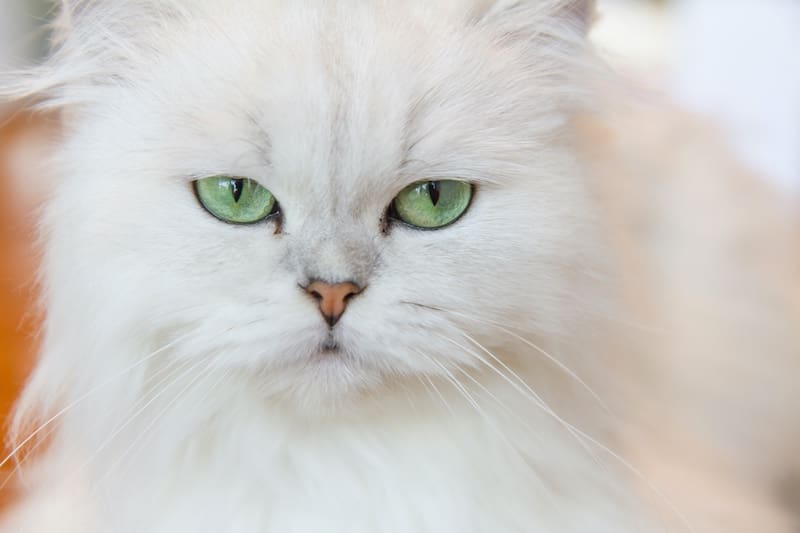
Coat and Fur
Persian cats are known for their luxurious coats that come in a variety of colors and patterns. Common coat colors include blue, red, black, chocolate, white, silver, calico, lilac, cream, tortoiseshell, gray, and more.
In addition to solid colors, Persian cats can also have coat patterns such as tipping, with silver and golden being particularly popular. Their fur is long and dense, requiring regular grooming to keep it looking its best.
Personality Traits
The round face and large, expressive eyes of Persian cats give them a unique, endearing appearance. Their ears are small and rounded, perfectly complementing their distinctive facial features.
As for their personality, Persian cats are generally known for their calm and affectionate demeanor. They enjoy quiet environments and can be quite playful, making them great companions for families or individuals seeking a loving, low-key pet.
Health Concerns for Persian Cats
Persian cats are known for their beauty, but they also have some health problems to watch for. It’s crucial to be informed about these issues to keep your Persian cat healthy and happy.
One problem is their flat faces, which can lead to breathing difficulties. Their small nasal passages can cause congestion, so keep an eye on your cat’s nose and listen for any unusual sounds when they breathe.
Weight is another concern for Persian cats. They have a tendency to become overweight, which can lead to various health issues. Monitor your cat’s weight, and provide them with a nutritious diet and regular exercise.
Some Persians may experience dental issues, such as gum disease or tooth decay. Regular dental check-ups and cleanings can help to prevent or address these problems.
You should also know that Persian cats’ lifespan is typically around 12 to 16 years. To ensure a long and healthy life, visit your veterinarian regularly and seek advice on preventive care tailored specifically for Persian cats’ unique needs.
Remember, being knowledgeable about potential health concerns can make a huge difference in keeping your Persian cat in the best possible condition.
Care and Grooming Needs
Bathing Needs
Caring for a Persian cat involves regular grooming to keep their luxurious coat in top shape. Your kitty will need daily brushing to prevent painful mats and tangles.
Avoid bathing your Persian too often, as it can strip the natural oils from their fur. Instead, opt for a gentle wipe-down with a damp cloth or specialized cat wipes.
When it’s time for a bath, use a cat-specific shampoo and warm water. Be sure to dry your furball thoroughly to prevent chills or skin irritations.
Proper grooming and care will not only keep your Persian looking beautiful, but also help maintain their overall health. By dedicating time every day to grooming, your cat will look and feel their best.
Persian Cat Behavior and Personality
When it comes to Persian cats, their character is often described as sweet and gentle. With their affectionate nature, they tend to form close bonds with their families.
Their classic, laid-back temperament makes them wonderful companions for those who prefer a quieter pet. However, don’t let their calm appearance fool you; they’re also known for their intelligence and playfulness.
Persian cats might not be the most outgoing or sociable among cat breeds, but they still enjoy a good play session. Engaging in playtime helps meet their exercise needs and keeps them healthy.
While Persians are often seen as reserved, your cat’s personality traits may vary. Some Persians might be surprisingly more social and enjoy interacting with other pets or people.
Remember that every cat is unique. Your Persian may be more or less affectionate, outgoing, or playful than the typical example of their breed.
Persian Cats and Breeding
Cat fanciers’ associations, like the Cat Fancier’s Association, have set breed standards for these beautiful cats. You’ll find that solid Persian cats often have a full, regal coat in a single shade, while bicolor options sport a contrasting mantle. Particolor Persians, on the other hand, may have a combination of two or more colors.
As for height, Persian cats are typically short to medium in size. They’re one of the most loved pets with their attractive looks and affectionate demeanor. The kittens of this breed are unbelievably cute and will quickly steal your heart.
When it comes to breeding, reputable breeders carefully select their breeding pairs to ensure healthy kittens. They also follow guidelines set by cat fanciers’ associations. If you’re considering getting yourself a pet Persian, it’s crucial to buy from a responsible breeder.
Some Persian cats have unique patterns, like the mackerel tabby, which is characterized by lines branching out from the spine of the cat. Chinchilla Persians are another popular variant, boasting a luxurious coat with silver or gold tipping. Add in their dazzling eyes, which come in colors like green, blue, or copper, and you’ve got a truly stunning pet.
Remember, Persian cats require more grooming than many other breeds, so make sure you’re ready to commit to their maintenance. With the right care, though, you’ll have a gorgeous, friendly companion that will bring joy to your life.
Frequently Asked Questions
What are the main differences between flat-faced and traditional Persians?
Flat-faced Persians, also known as brachycephalic, have a more pronounced, squished-looking face. Traditional Persians have a more balanced facial structure with a longer nose.
Which Persian cat breed is the most affectionate?
Doll-faced Persians are often considered the most affectionate due to their sociable and loving nature. However, each cat’s personality can vary, so it’s important to spend time with them and observe their behavior.
What is a Peke-face Persian cat and how does it differ from other breeds?
A Peke-face Persian cat is a subtype of flat-faced Persians. They have an even more shortened and flattened facial structure compared to other flat-faced Persians, resembling a Pekingese dog.
Are there unique characteristics in Persian cat personalities?
Persian cats are generally known for their calm, laid-back temperament. They enjoy relaxing in cozy spots and appreciate gentle, consistent attention from their owners.
What factors affect the lifespan of Persian cats?
The lifespan of Persian cats depends on factors like genetics, diet, and overall health care. Regular vet check-ups and proper grooming can help extend their life expectancy.
How can you identify a half Persian cat compared to a full breed?
A half Persian cat may have a mix of physical traits from both Persian and another breed. Observing their facial structure, coat, and body shape can help identify their mixed heritage. A DNA test could confirm the cat’s breed background.




